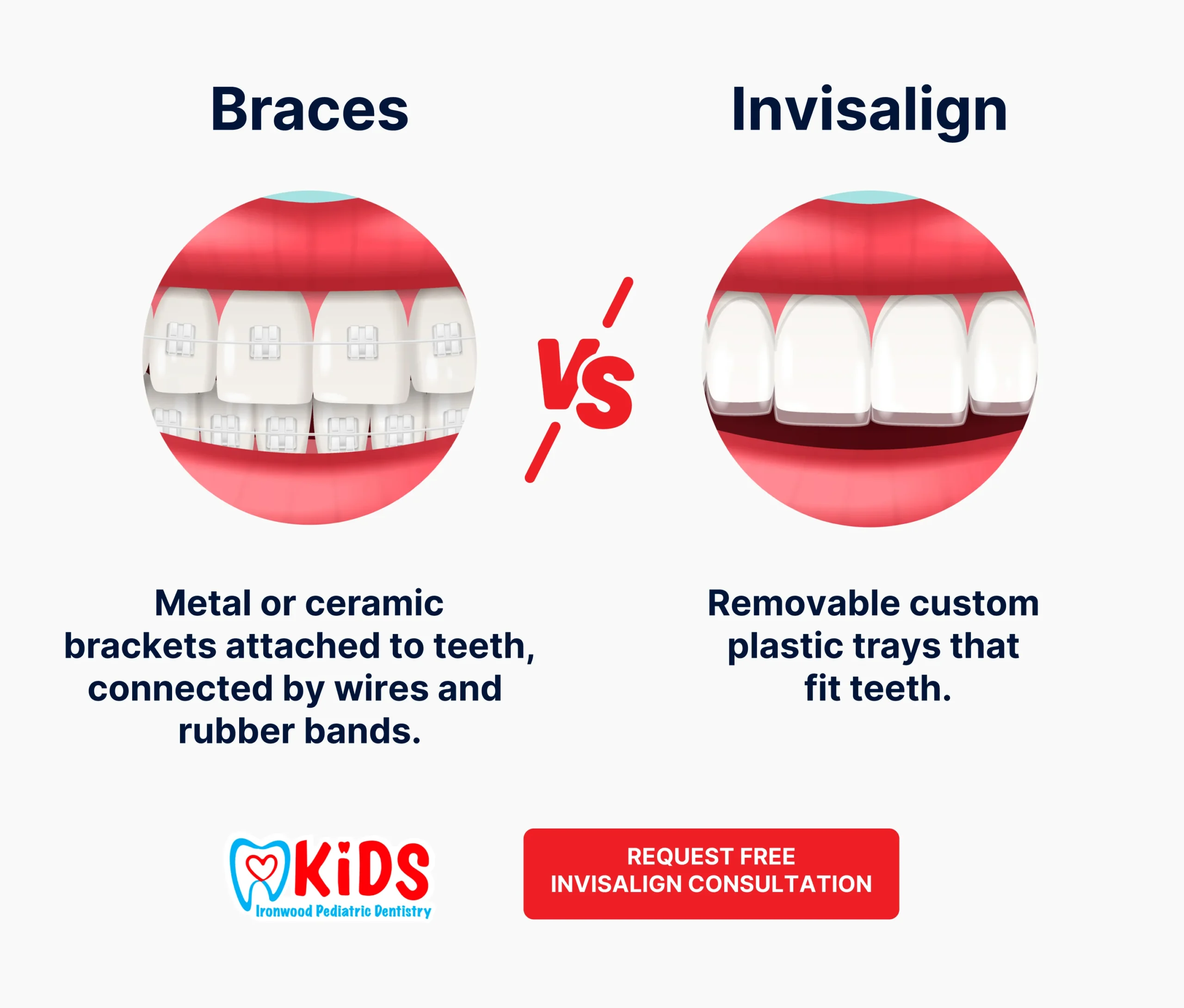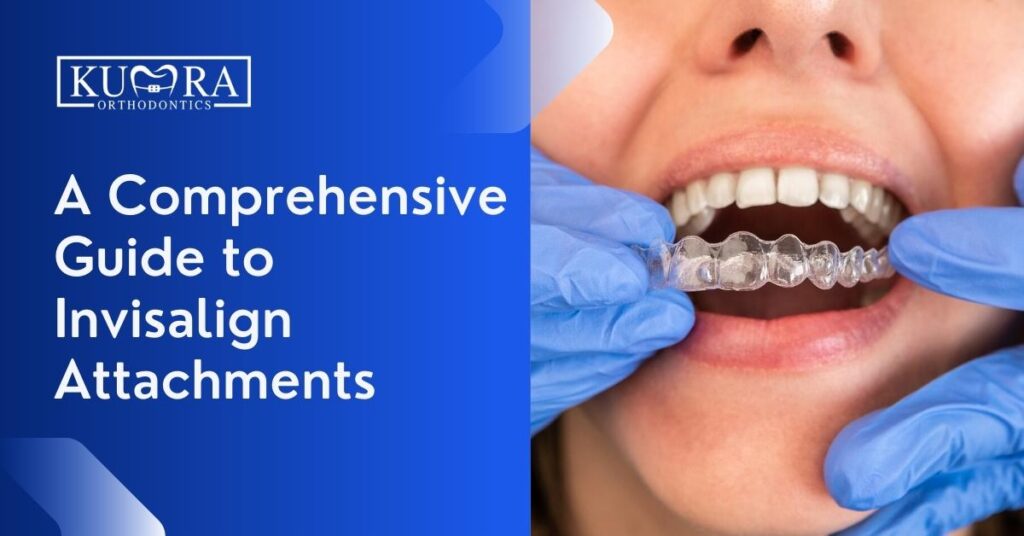How Invisalign Functions: Your Overview to Clear Aligners and Their Effectiveness
How Invisalign Functions: Your Overview to Clear Aligners and Their Effectiveness
Blog Article
Invisalign vs. Typical Braces: Which Choice Is Right for You?
When taking into consideration orthodontic therapy, the selection between Invisalign and conventional braces offers a number of crucial variables that warrant cautious examination. Invisalign uses a discreet choice with detachable aligners, while traditional dental braces give a much more visible yet reliable option for serious imbalance.
Summary of Treatment Alternatives

On the other hand, traditional braces include metal brackets and cords that are adhered to the teeth. This method uses continuous stress over time to achieve positioning. While effective for complex orthodontic problems, typical braces need routine sees for modifications and can pose challenges in preserving dental health as a result of the difficulty of cleaning up about wires and brackets.
Both choices have their qualities, and the option often rests on certain oral problems, way of living choices, and person compliance. Eventually, consulting an orthodontic expert is vital for determining the most suitable treatment strategy tailored to private requirements. Comprehending the subtleties of each choice can dramatically influence the overall success of orthodontic therapy.
Aesthetic Considerations
A significant factor influencing the option between Invisalign and standard braces is the aesthetic appeal each therapy supplies. Invisalign aligners are crafted from clear plastic, making them virtually unnoticeable when worn. This discreet look is specifically appealing to grownups and young adults who might feel awkward regarding their orthodontic therapy. The capacity to preserve a natural smile throughout the alignment procedure can significantly enhance the patient's confidence in expert and social settings.
On the other hand, conventional dental braces include steel brackets and cords, which can be much more noticeable. While innovations in orthodontic modern technology have led to the advancement of smaller braces and colored elastics, standard braces still maintain an even more noticeable profile. For some people, the presence of dental braces may discourage them from seeking required treatment.
Ultimately, the choice between Invisalign and standard dental braces might rest on individual preferences concerning aesthetic appeals. Individuals who focus on discretion commonly favor Invisalign, while those who are much less concerned about visibility may go with standard dental braces. Understanding the visual implications of each option is important for making an educated decision that aligns with one's way of living and choices.
Comfort and Convenience

In terms of convenience, Invisalign aligners are detachable, making it possible for individuals to enjoy their favored foods without constraint and preserve optimal dental health. Brushing and flossing are streamlined, as the aligners can link be obtained during these routines, whereas typical dental braces need careful maneuvering around cables and brackets.
In comparison, conventional braces require normal modifications, making them much less practical for those with active routines. In general, the convenience and benefit of Invisalign make it an enticing selection for numerous individuals seeking orthodontic therapy.
Therapy Duration and Performance
While both Invisalign and conventional dental braces are efficient in fixing oral imbalances, the duration of therapy can differ significantly in between both alternatives. Commonly, Invisalign therapy can take anywhere from 12 to 18 months, depending on the complexity of the case. The clear aligners work by gradually moving teeth into their desired settings, and regular follow-ups with an orthodontist help make certain development stays on course.
In comparison, traditional dental braces often require a longer dedication, generally varying from 18 months to 3 years. This results from their set nature and making use of cables and brackets, which can be a lot more reliable for severe misalignments and complex cases (Invisalign). The therapy performance of typical braces is well-documented, as they enable specific changes and better control over tooth motion
Eventually, the choice between Invisalign and traditional dental braces might depend upon both the expected treatment duration and the specific oral concerns handy. Consulting with an orthodontist is critical, as they can provide customized referrals based upon private requirements, making certain the picked technique lines up with desired results and durations.
Expense Comparison and Insurance Coverage Alternatives
Expense plays a considerable function in the decision-making process for individuals thinking about orthodontic therapy, whether deciding for Invisalign Continued or standard braces. Typically, the price of Invisalign arrays from $3,000 to $8,000, while traditional braces commonly set you back between $2,000 and $6,000. Aspects influencing these costs include the intricacy of the instance, the period of therapy, and geographical place.
Insurance coverage can substantially affect out-of-pocket expenses. Several dental insurance strategies supply partial coverage for orthodontic treatments, yet the specifics can differ commonly. It is crucial for individuals to review their insurance coverage to figure out the degree of protection for either option. Generally, traditional dental braces might be extra frequently covered by insurance plans contrasted to Invisalign, which some insurance firms classify as an aesthetic procedure.
Furthermore, numerous orthodontic methods supply adaptable payment strategies, making both therapy alternatives much more obtainable. Clients must make inquiries concerning prospective financing alternatives and discount rates for ahead of time payments. Assessing the total cost, including insurance coverage benefits and layaway plan, is important for making a notified decision that aligns with both visual choices and budget plan factors to consider.

Verdict
In recap, the selection in between Invisalign and typical dental braces rests on numerous variables, consisting of visual choices, convenience, therapy duration, and cost. Invisalign uses a very discreet, removable choice that promotes dental Get the facts health and nutritional versatility, while traditional dental braces might be preferable for complicated oral concerns and frequently come at a lower price point. Inevitably, consultation with an orthodontist is important to analyze individual circumstances and determine one of the most appropriate therapy alternative for attaining optimum oral alignment.
When thinking about orthodontic treatment, the choice between Invisalign and traditional braces provides a number of crucial factors that warrant cautious analysis.Contrasting Invisalign and standard braces discloses distinctive therapy choices for orthodontic improvement.While both Invisalign and typical dental braces are reliable in correcting dental misalignments, the period of treatment can vary substantially in between the two choices.Expense plays a substantial function in the decision-making process for people taking into consideration orthodontic therapy, whether deciding for Invisalign or standard dental braces.In summary, the selection in between Invisalign and conventional dental braces pivots on several aspects, consisting of visual choices, convenience, therapy duration, and cost.
Report this page